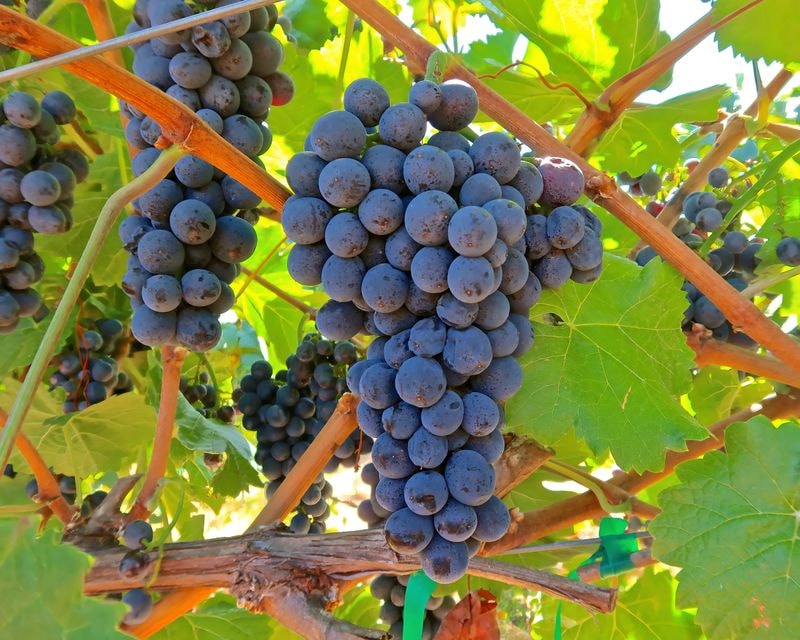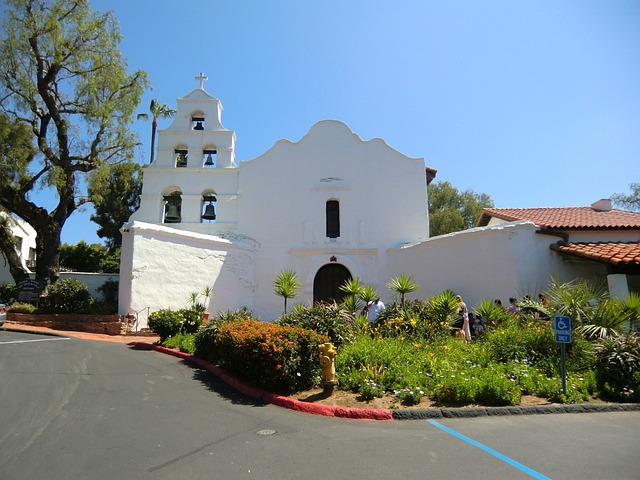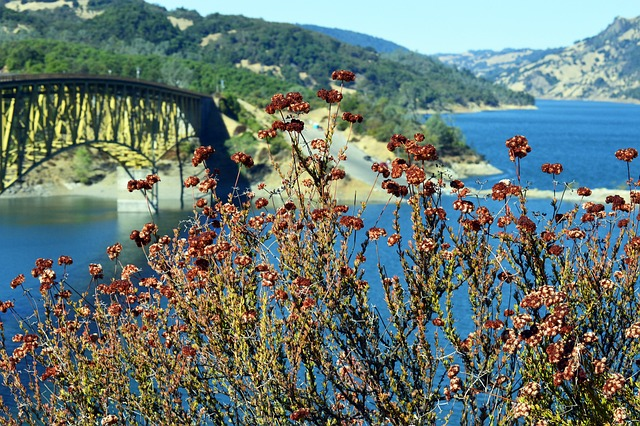Tale of Elegance: The History and Legacy of Pinot Noir Wine Grape in California

Origins of Pinot Noir
Pinot Noir's origins can be traced back to the Burgundy region of France, where it has been cultivated for centuries. Known for its thin skin, delicate flavors, and susceptibility to terroir, Pinot Noir is a grape of unparalleled complexity and finesse. In California, Pinot Noir thrives in cool coastal regions, where maritime influence and diverse soils lend a unique character to the wines. Common descriptors for California Pinot Noir include bright red berry fruit, earthy undertones, silky textures, and vibrant acidity.
Pinot Noir is one of the oldest grape varieties in the world, with origins dating back over 1,000 years before the emergence of Cabernet Sauvignon. This grape was a favorite in Roman times, alongside other now-extinct varieties. Columella, a Roman writer, described Pinot Noir in the 1st century CE in Burgundy, France, although its cultivation extended as far north as Belgium.
Pinot Noir is highly prone to mutations, leading to hundreds of unique variations globally. Over 50 of these are officially recognized in France. The finest quality grapes are typically found in France and Oregon, USA.
Pinot Noir’s Particular Soil
Although highly coveted, Pinot Noir is notoriously difficult to grow. It thrives in well-drained soils that are limestone or clay-based. While it can grow in fertile soils, this often results in higher alcohol levels and a less distinct flavor profile, which is why mass-market producers often prefer such conditions.
Pinot Noir’s Thin Skin
Pinot Noir grapes have thin skins, making them susceptible to sunburn and splitting. They are also early budding and vulnerable to late-season frosts. The grape prefers cool climates with long growing seasons, making it unsuitable for warm, sunny regions.
The Heartbreak Grape

Pinot Noir grapes, often hailed as the "heartbreak grape," is celebrated for its ethereal elegance and the profound wines it produce. With a history that traces back centuries and a reputation for challenging viticulture, Pinot Noir has nonetheless found a special place in California's winemaking landscape. In this article, we embark on a journey through time to explore the captivating history of the Pinot Noir wine grape and the exceptional wines it yields in the diverse terroirs of California.
Nothing truly worth obsessing overcomes easily, and Pinot Noir is no exception. This grape is thin-skinned and temperamental, making it challenging to grow. Even minor temperature fluctuations can affect its development, which is why Mark West seeks the best cool, dry climates for their vineyards. When cultivated correctly, Pinot Noir yields a wonderfully complex wine, offering a perfect expression of this unique grape in countless variations. It's truly unlike any other.
How Pinot Noir Came to California - The Early Years

Pinot Noir holds a special place in the hearts of California wine enthusiasts for its ethereal elegance and ability to convey the nuances of terroir with precision. In cooler coastal regions like Sonoma Coast and Santa Lucia Highlands, Pinot Noir achieves optimal ripeness while retaining vibrant acidity, resulting in wines of exceptional balance and finesse. California Pinot Noir is prized for its bright red berry fruit, earthy undertones, and silky texture, making it a perfect accompaniment to a wide range of cuisines.
The history of Pinot Noir grapes in California dates back to the early days of Spanish and Franciscan missionaries, who planted vineyards throughout the state in the 18th century. However, it wasn't until the mid-20th century that Pinot Noir gained widespread recognition in California, thanks in part to pioneering winemakers who recognized its potential in cooler coastal regions. Visionaries like Martin Ray, Richard Sanford, and David Bruce planted vineyards in regions such as Sonoma County, Santa Barbara County, and the Santa Cruz Mountains, laying the foundation for the Pinot Noir Renaissance in the Golden State.
Pinot Noir in Sonoma County

In the 1980s and 1990s, the Sonoma Coast emerged as a premier appellation for Pinot Noir production, thanks to its proximity to the Pacific Ocean and unique microclimates. Vineyards perched on the fog-shrouded hillsides of the Sonoma Coast produce wines of exceptional balance and complexity, with a focus on bright acidity and pure fruit expression.
Sonoma Coast Pinot Noir grapes are characterized by flavors of cherry, raspberry, and wild strawberry, with subtle notes of forest floor, mushroom, and spice. Iconic producers like Flowers Vineyard & Winery, Hirsch Vineyards, and Peay Vineyards have garnered acclaim for their elegant, terroir-driven expressions of Pinot Noir.
Sonoma Coast, a renowned wine region in Northern California, is celebrated for its exceptional Pinot Noir. The region's cool, maritime climate and diverse terroir create ideal conditions for producing elegant and complex wines. Nestled along the rugged coastline, Sonoma Coast vineyards benefit from the cooling influence of the Pacific Ocean, which ensures a long growing season and balanced ripeness.
Wineries in Sonoma with Pinot Noir Wines

Williams Selyem Winery
Williams Selyem Winery is a notable name in Sonoma Coast's Pinot Noir scene. Founded by Burt Williams and Ed Selyem, this winery has garnered a cult following for its meticulous, small-lot Pinot Noir vines.
Their wines are known for their intricate flavors, vibrant acidity, and silky texture, reflecting the unique terroir of each vineyard site.
Failla Wines
Failla Wines, established by winemaker Ehren Jordan, is another gem in the region. Failla's Pinot Noirs are crafted with a hands-off approach, emphasizing minimal intervention and natural winemaking techniques. The result is a portfolio of expressive wines that showcase bright red fruit, earthy undertones, and elegant structure.
Peay Vineyards
Peay Vineyards, a family-owned estate, focuses exclusively on estate-grown Pinot Noir. Located in the remote Annapolis area of Sonoma Coast.
Peay Vineyards benefits from a cool, foggy climate that enhances the grape's aromatic complexity. Their Pinot Noirs are celebrated for their purity, balance, and age-worthy potential.
Flowers Vineyard & Winery
Flowers Vineyard & Winery, perched on the coastal ridges, is renowned for its commitment to sustainable viticulture. The winery's Pinot Noirs capture the essence of the rugged Sonoma Coast landscape, with flavors of wild berries, coastal herbs, and a distinctive minerality.
These wineries and winemakers exemplify the dedication and artistry behind Sonoma Coast's Pinot Noir. Their commitment to quality and terroir-driven expressions has solidified the region's reputation as a premier destination for Pinot Noir lovers.
Wineries in Monterrey County with Pinot Noir Wines

Monterey County’s Pinot Noir: Coastal Gems
Morgan Winery
Morgan Winery is a leading producer in Monterey County, founded by Dan and Donna Lee in 1982. Their focus on sustainable farming practices and careful vineyard management produces Pinot Noirs that are rich in red fruit flavors, with balanced acidity and a silky finish. Morgan’s Double L Vineyard, in particular, is a standout, offering wines that showcase the depth and elegance of Monterey's terroir.

Pisoni Vineyards
Many people believe that producing exceptional wine is all about the grapes, without realizing how the entire surrounding ecosystem plays a part. “Developing the best possible fruit means taking care of everything on our land–everything from the soil to the plants to the beneficial insects and honeybees,” says Mark Pisoni.

Embracing and caring for the vineyards’ terroir means working with the natural elements to create an ideal ecosystem and habitat that will last well into the future. This sense of place is exactly what Mark and Jeff Pisoni are aiming to achieve in their wines with different sustainable farming techniques within the vineyards in the Santa Lucia Highlands.

Talbott Vineyards
Talbott Vineyards, another prominent name, specializes in estate-grown Pinot Noir from the Santa Lucia Highlands. Founded by Robb Talbott, the winery’s Pinot Noirs are known for their intense flavors, with notes of dark cherry, spice, and a touch of earthiness.
Sleepy Hollow Vineyard
The Sleepy Hollow Vineyard, in particular, is renowned for producing wines with exceptional complexity and structure.
Bernardus Winery
Bernardus Winery, established by Bernardus Pon, aims to create wines that rival the best of Burgundy. Their Pinot Noirs are crafted with meticulous attention to detail, resulting in wines that are both elegant and powerful, with flavors of raspberry, plum, and a hint of minerality.
Hahn Family Wines
Hahn Family Wines, situated in the Santa Lucia Highlands, is celebrated for its vibrant and approachable Pinot Noirs. The Hahn SLH Pinot Noir, with its bright fruit flavors, floral notes, and smooth tannins, is a testament to the region’s potential for producing high-quality Pinot Noir.
Monterey County, located along California’s Central Coast, is gaining recognition for its exceptional Pinot Noir. The region's unique geography, with its proximity to the cold waters of Monterey Bay, creates a cool climate ideal for cultivating this delicate grape variety. The result is a range of Pinot Noirs that are vibrant, complex, and distinctly expressive of their coastal terroir.
Monterey County’s Pinot Noir is characterized by its diversity and quality, driven by the passion and expertise of its winemakers. The region’s unique coastal climate and dedicated producers ensure that Monterey Pinot Noir continues to capture the hearts of wine enthusiasts around the world.
Sustainability Wine Farming
Many people believe that producing exceptional wine is all about the grapes, without realizing how the entire surrounding ecosystem plays a part. “Developing the best possible fruit means taking care of everything on our land–everything from the soil to the plants to the beneficial insects and honeybees,” says Mark Pisoni.
Embracing and caring for the vineyards’ terroir means working with the natural elements to create an ideal ecosystem and habitat that will last well into the future. This sense of place is exactly what Mark and Jeff Pisoni are aiming to achieve in their wines with different sustainable farming techniques within the vineyards in the Santa Lucia Highlands.
Wineries in Santa Barbara County with Pinot Noir Wine

In Santa Barbara County, Pinot Noir thrives in a variety of microclimates, from the windswept hillsides of Sta. Rita Hills to the sun-drenched valleys of Santa Maria and Santa Ynez.
Each subregion imparts its own unique characteristics to the wines, from the bright acidity and mineral intensity of Sta. Rita Hills to the richness and depth of Santa Maria Valley. Santa Barbara County Pinot Noir is prized for its complexity, with flavors ranging from red cherry and cranberry to black tea and spice.
Santa Barbara County has emerged as a premier destination for Pinot Noir, thanks to its unique geography and ideal climate. Nestled between the Pacific Ocean and mountain ranges, the region's transverse valleys allow cool ocean breezes to moderate the temperatures, creating perfect conditions for growing Pinot Noir.
Sanford Winery
Sanford Winery stands as a pioneer in the region, credited with planting the first Pinot Noir vines in the Sta. Rita Hills in the early 1970s. Sanford’s wines are celebrated for their bright red fruit, balanced acidity, and elegant structure, reflecting the winery’s deep commitment to the terroir.
Au Bon Climat
Au Bon Climat, founded by the legendary Jim Clendenen, has been a benchmark for Santa Barbara Pinot Noir since 1982. Known for their Burgundian style, Au Bon Climat’s Pinot Noirs are complex, with earthy undertones, vibrant fruit, and a refined, silky texture. Clendenen’s meticulous approach and vision have left an indelible mark on the region’s winemaking.
Foxen Winery
Foxen Winery, established by Bill Wathen and Dick Doré, is another standout. Their commitment to sustainable practices and small-lot production results in Pinot Noirs that are both expressive and nuanced, with flavors of cherry, spice, and a touch of minerality.
Melville Vineyards & Winery
Melville Vineyards & Winery, located in the heart of Sta. Rita Hills, is renowned for its estate-grown Pinot Noir. Winemaker Chad Melville focuses on minimal intervention, allowing the purity and character of the grapes to shine. Melville’s Pinot Noirs are known for their vibrant aromatics, complexity, and age-worthiness.
Santa Barbara County's Diversity
Santa Barbara County’s Pinot Noir scene is characterized by a combination of pioneering spirit and innovative winemaking. The dedication of these wineries and winemakers has cemented the region's status as a top producer of world-class Pinot Noir, offering wines that are both distinctive and captivating.
Experience California's Pinot Noir Yourself
Are you new to Pinot Noir? Perhaps you are more familiar with Cabernet Sauvignon.
Pinot Noir is known for its thin skin, which makes it sensitive and challenging to grow. It thrives in cooler climates. While Cabernet Sauvignon has thicker skin and is more robust, thriving in warmer climates.
Pinot Noir is light to medium-bodied with flavors of red fruits like cherry, raspberry, and strawberry. It often has earthy and floral notes. A Cabernet Sauvignon is full-bodied with flavors of dark fruits like blackcurrant, blackberry, and plum. It often has notes of green pepper, mint, tobacco, and sometimes vanilla due to oak aging.

The Best Pinot Noir Food Pairings
Pinot Noir complements a variety of dishes. It pairs well with cooked proteins, earthy vegetables (especially root vegetables), and vibrant fruits like cranberries, cherries, and plums. It is particularly delightful with duck, salmon, stews, mushrooms, pork, and tomato-based sauces.
Food Pairings to Avoid with Pinot Noir
Given its versatility, Pinot Noir rarely disappoints. However, it is generally best to avoid pairing it with very fatty dishes or extremely spicy foods, as these can overwhelm the wine’s subtle flavors.
Pinot Noir Tasting Notes
Pinot Noir lacks a singular classic style, but a high-quality bottle is typically medium-bodied with sufficient tannins for structure, high acidity, and notes of berries, herbs, and florals. Despite being lighter in color, Pinot Noir can age well in both new and old oak.
Interesting Fact: Pinot Noir, Pinot Grigio, and Pinot Blanc all share the same DNA and are simply mutations of the Pinot grape. Despite Pinot Noir being red and Pinot Grigio and Pinot Blanc being white, they are essentially the same grape.
Pinot Noir Food Pairings
Pinot Noir stands out for its versatility, making it suitable for pairing with a wide range of foods. Its light alcohol content also makes it an excellent choice as a solo sipper or aperitif.
We have just begun to explore the Wine Grape, the wineries that produce it, and the grape origin. Now it is time to raise your glass of Pinot Noir and celebrate not only its rich history but also the enduring spirit of exploration and innovation that continues to be the legacy and continues to shape the state's dynamic wine industry.
From its roots in Roman times to its widespread popularity today, Pinot Noir has remained a beloved grape. Despite its challenges in cultivation, winemakers around the world strive to grow their versions of Pinot Noir. Its delicate notes of cherry, herbs, and florals enchant red wine enthusiasts, making it a global favorite.
If you have not tried a delicious and delightful wines of the California Pinot Noir grape, you may be surprised at this versatile and enjoyable wine that you can enjoy with most foods or on its own. Pinot Noir rarely disappoints.
From the fog-kissed vineyards of the Sonoma Coast to the sun-drenched slopes of Santa Barbara County, California's Pinot Noir vineyards and wines offer a glimpse into the soul of the Golden State, captivating wine enthusiasts with their timeless elegance and unparalleled beauty.
Pinot Noir is a notoriously difficult grape to cultivate, demanding a gentle touch during the winemaking process. Every detail is crucial, which is why the team at Mark West is dedicated to mastering Pinot Noir. To craft the best Pinot Noir, they begin by gently destemming and crushing the grapes upon arrival at the winery. Daily punch-downs and pump-overs are employed to extract optimal flavor and color. After a light pressing, the wine is aged in French oak, enhancing the natural flavors of Pinot Noir.
In this article we have only started to highlight a few of the wineries and the winemakers that prioritize quality, allowing the grapes to express themselves fully. Each harvest brings a new adventure, as every crop is unique, and each year, they present wines that wine lovers cherish. you are a long-time fan of Pinot Noir or among those who may be unfamiliar with this wine, we hope you have been encouraged to continue to venture out and try the Pinot Noirs that California, and beyond have to offer.
Special thanks to Santa Lucia Highlands, some of the winemakers, and Randy Caparoso Photography for some of the photos provided
